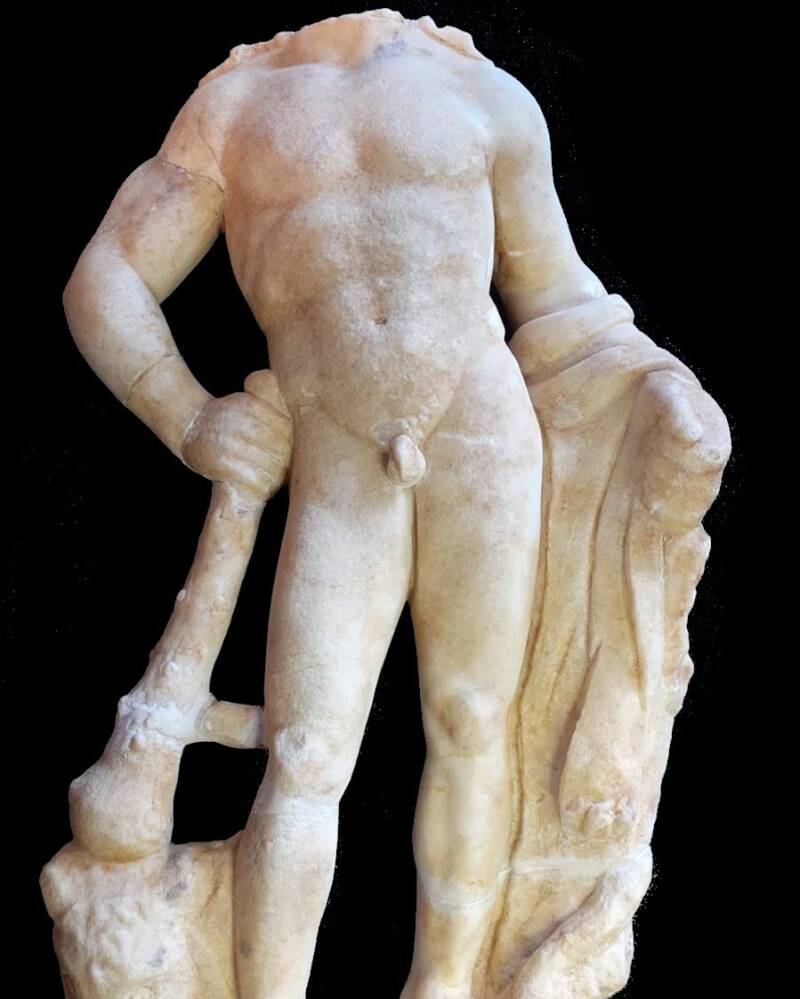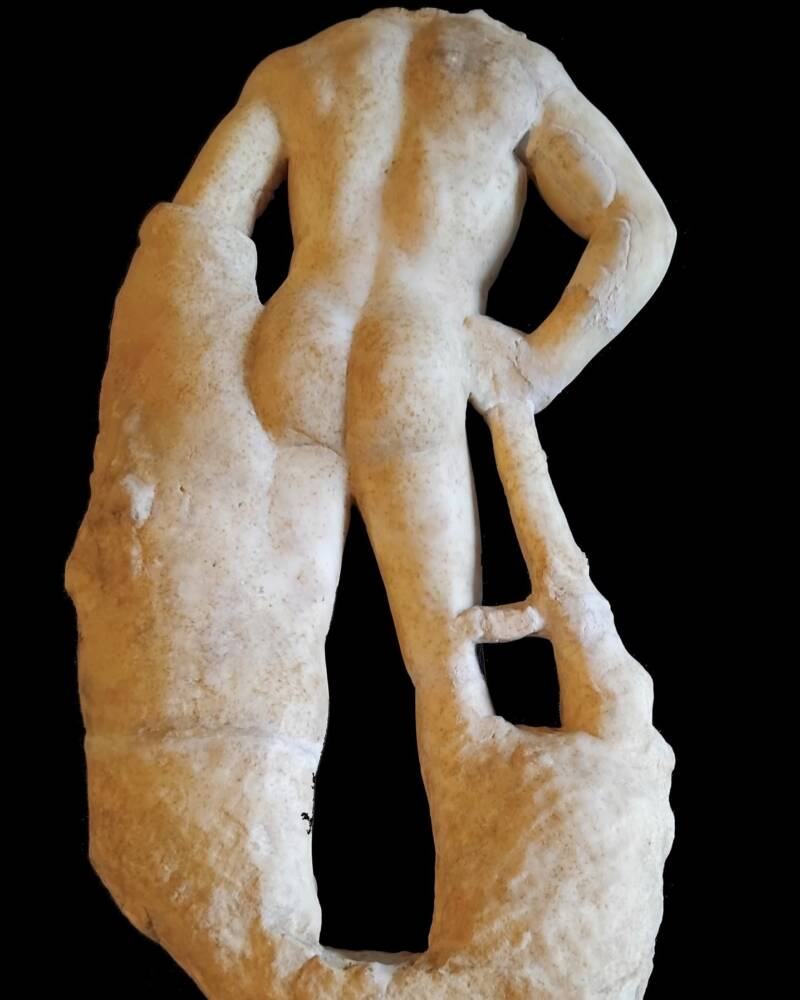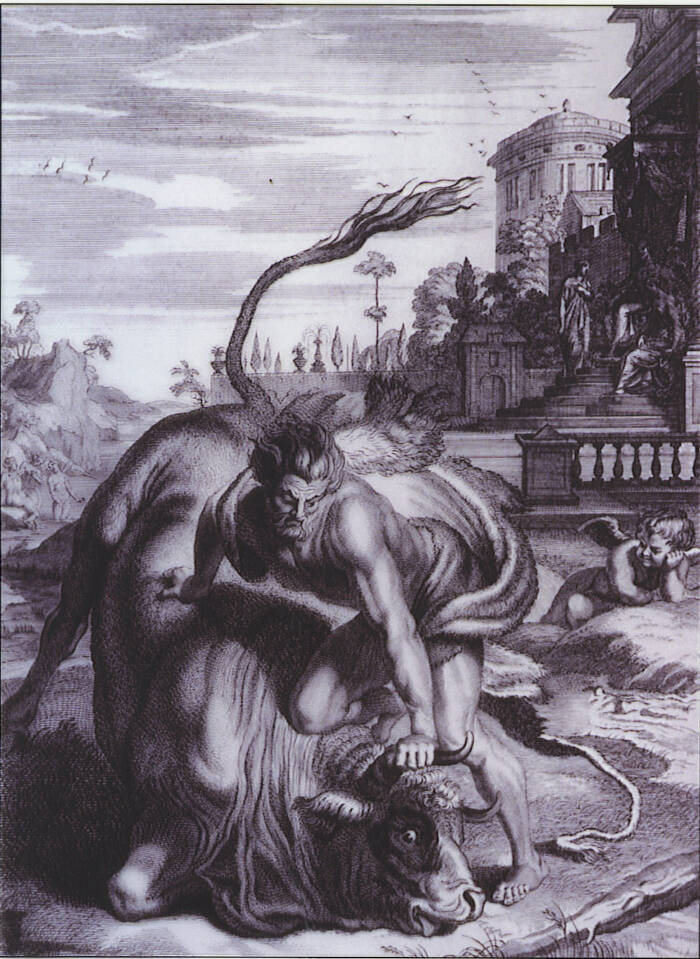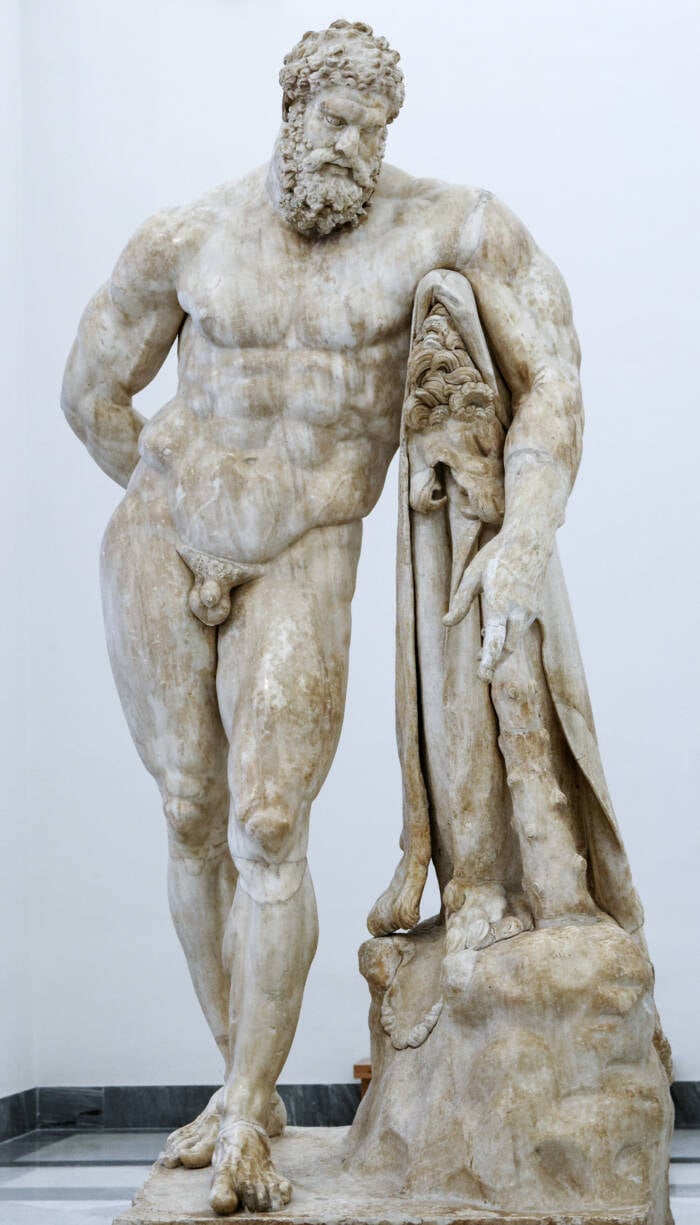Archaeologists In Italy Unearthed A 1,700-Year-Old Statue Of Hercules That’s Just 20 Inches Tall
See what I mean!!! Look at that 👆👇- Cretan?? Bull ?? Mosiacs? - well... that is MINOAN/CRETAN! Sorry Bulls, I do feel sorry for you all - being killed and blood sacrificed over and over... In my book FINDING THE INVISIBLES, you will read more about BULLS and Minoans... so many myths are falling apart, stinking of their lies.
Archaeologists In Italy Unearthed A 1,700-Year-Old Statue Of Hercules That’s Just 20 Inches Tall
Found in three pieces and missing its head, this miniature marble artifact is all the more rare for depicting Hercules' lesser-known seventh labor, the capture of the Cretan bull.

SAGAS Unifi/FacebookThe restored Hercules statuette found in Montaione.
Archaeologists working in the town of Montaione, near Florence, Italy, recently announced the discovery of a miniature statue depicting the Greco-Roman hero Hercules.
Standing just 20 inches tall, this marble statue dates back 1,700 years and showcases the excellent craftsmanship of the ancient Romans (MINOAN SLAVES). The statue’s size isn’t the only unique thing about it, however. It also features a detail rarely depicted in statues of the Greek hero, making it an even more remarkable and important discovery.
The Discovery Of A Miniature Hercules Statue Featuring A Rare Depiction Of His Seventh Labor

SAGAS Unifi/FacebookThe statuette features the head of the Cretan Bull beneath Hercules’ club.
This tiny Hercules statue was found broken into three pieces and missing its head. But although the hero himself is lacking a head, there is a different head lying at his feet — that of the Cretan Bull, the creature that Pasiphaë fell in love and sired the Minotaur with.
Capturing the bull was Hercules’ seventh labor, and one not often depicted in artworks featuring the legendary hero.
The Cretan Bull was originally sent to King Minos of Crete by Poseidon and intended for sacrifice. Minos, however, chose to keep the bull as he was ensnared by its beauty and sacrificed an inferior bull in its stead. This caused Poseidon to fly into a rage.
The god then asked Aphrodite to curse Minos’ wife Pasiphaë so that she would fall in love with the bull. At some point, the Cretan Bull impregnated her, and she gave birth to the half-man, half-bull creature known as the Minotaur.

Wikimedia CommonsHercules wrestling the Cretan Bull.
Meanwhile, the Cretan Bull went on a rampage, wreaking havoc across the island. Hercules was sent to Crete by King Eurystheus to capture the bull as his seventh labor, and Hercules wrestled the bull to the ground and returned it to the king in Mycenae.
King Eurystheus, however, chose to set the bull free and it continued its rampage until it reached Marathon and was slain by the hero Theseus.
Despite being one of the major feats of Hercules, however, depictions of him capturing the Cretan Bull are somewhat rare in the art world, particularly in statues. More well known depictions of Hercules in art are often similar to the famous Farnese Hercules statue, which shows the hero leaning on his club with the skin of the Nemean lion draped over it — the slaying of which was the first task of The Twelve Labors.

Wikimedia Commons/The Farnese Hercules.
The fact that this new statue features the head of the Cretan Bull is itself rather unique and showcases an often overlooked element of the legend.
NOTE👇
Poseidon’s festival
Poseidon had multiple festivals throughout the year, often marked by certain seasonal changes. Not much is known about the particular festival which occurred around the winter solstice.
The festival likely involved feasting and wine. Based on ancient descriptions of other events held in Poseidon’s honor, historians can make educated guesses about the winter solstice festival.
In the Odyssey, one such festival was mentioned by Homer, who wrote, “The people were on the shore, sacrificing jet-black bulls to the blue-crested god who shakes the earth. There were nine parties, five hundred sitting in each party, and nine bulls were laid out before each.”
(Source: How Was Winter Solstice Celebrated in Ancient Greece? By Alexander Gale)
After sacrificing the bulls, Homer described how the festival attendants would say prayers to Poseidon, eat their share of the sacrificial animals, and drink large quantities of wine.
==
youtube comment I found interesting
Minoans and Mycenaeans were the same people and both highly indigenous to Greece. Have a look at this related article, https://www.sciencemag.org/news/2017/08/greeks-really-do-have-near-mythical-origins-ancient-dna-reveals.
Here is also the actual genetic study without paywall, https://www.ncbi.nlm.nih.gov/pmc/articles/PMC5565772/.
Furthermore, the first Mediterranean people who went outside of it, even all the way to America, were the Mycenaeans/Minoans, not the Phoenicians.
Have a look at this paper for example, https://www.academia.edu/35439391/ANCIENT_GREECE_AND_THE_MODERN_WORLD_CONFERENCE_Ancient_Olympia_28-31_August_2016_Travelling_from_Canada_to_Carthage_in_86_AD.
Greeks throughout their history, from Minoans times all the way to today, ruled the Seas. It is by no luck that today they have the largest fleet in the world.
Have a read at this article: https://safety4sea.com/top-10-shipowning-nations-2019-greece-remains-on-top/.
It is only during the Greek Dark Ages which lasted some 250 years, that Phoenicians emerged as a Sea-power, but after the Greek Dark Ages, Greeks re-emerged as the leaders at Sea.
Last, Phoenicians didn't have an Alphabet but a syllabary, consonant, abjad script, not much different from the earlier Greek writing script, which was the Linear B script. The first ever true Alphabet in history was the Greek Alphabet, which only borrowed some (they created some of their own) characters of the Phoenician script, and also introduced the vowels, therefore making it a real Alphabet, meaning a character for each sound.





Comments
Post a Comment
leave a message please